Bronze Whaler Sharks (Carcharhinus brachyurus), also known as Copper Sharks, are sought-after game fish for recreational anglers in many parts of the world. They are known for their impressive strength and fighting abilities, which challenge anglers. These sharks can reach up to 11 feet (3.3 meters) in length and weigh up to 500 pounds (227 kilograms). For a more detailed description of this species, please refer to this link.
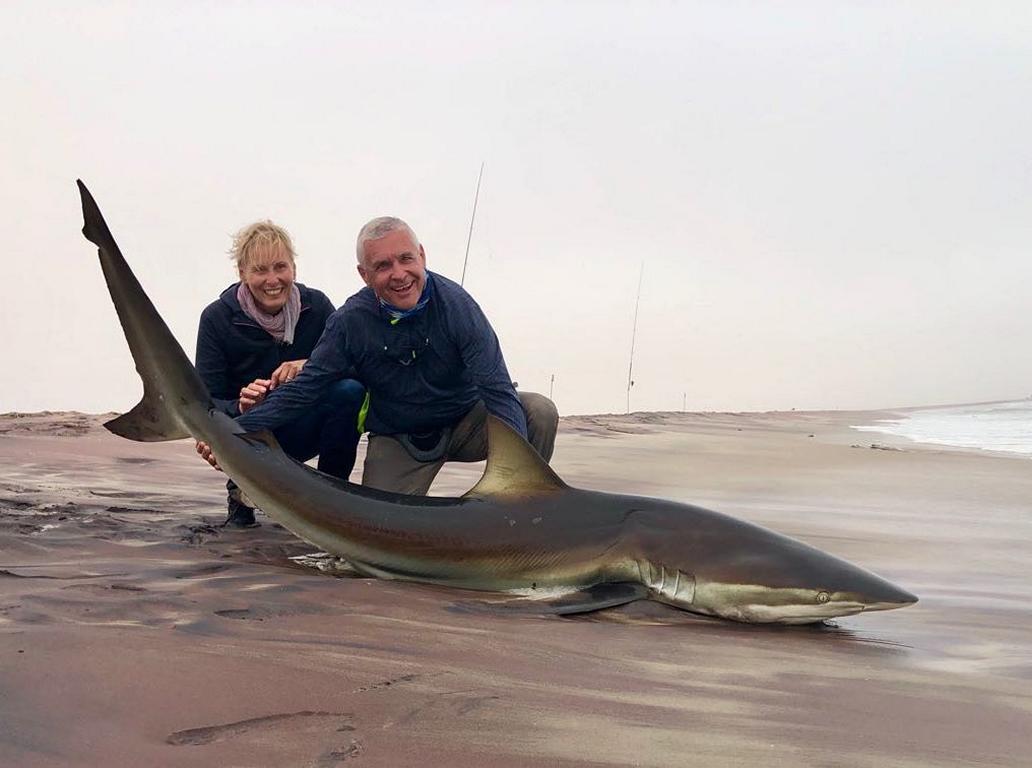
The subject matter of this article is not directly related to my usual themes of bushcraft, survival, foraging, or simple living. Catching Bronze Whaler Sharks through shore angling requires strong and modern equipment, as these sharks are located far out in the ocean and exert a brutal force when hooked, making it impossible to catch them with primitive tackle. However, I have included this article in my “Fishing skills” series. It was a unique and unforgettable experience to catch such a magnificent creature and release it back into the ocean unharmed.

The location where shark fishing was conducted
The Namibian Skeleton Coast is home to one of the world’s largest populations of Bronze Whaler sharks. This coast benefits from the Southern Atlantic’s cold and nutrient-rich Benguela current, which flows from north to south along the coastline. The hot Namib desert directly behind the coast also creates heavy morning fogs and overcast weather. This results in cold, windy, and clammy air in the area, while the water is chilly. The long sandy beaches south of Henties Bay, combined with heavy wave action, make it an ideal location for fishing these large fish, as there are few snags on the sandy bottom.

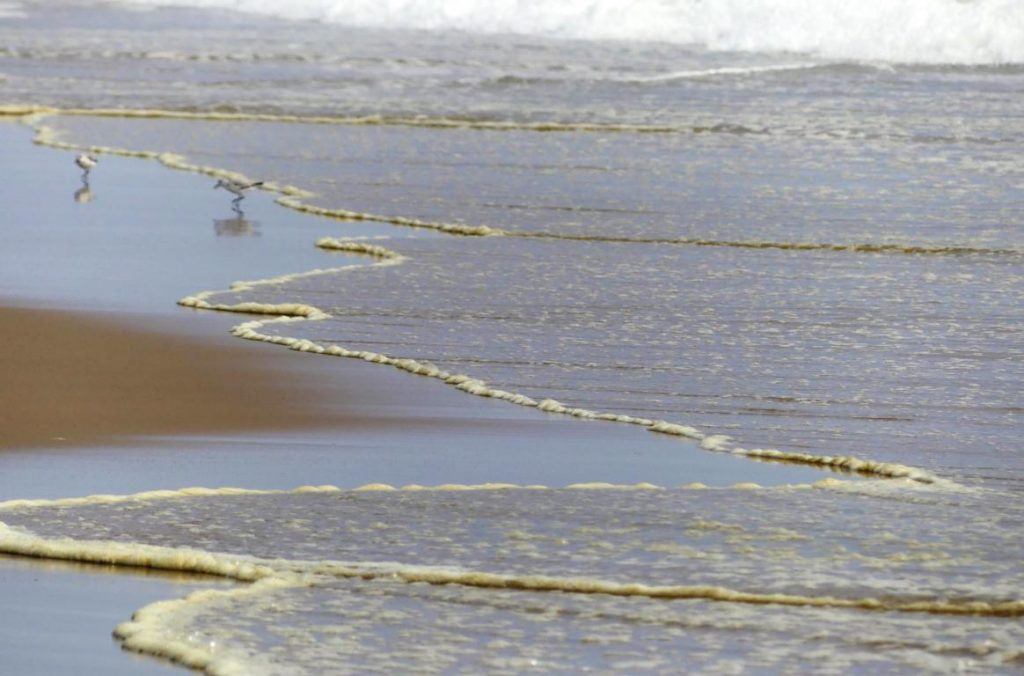

Bronze Whaler sharks typically patrol the shoreline along the continental shelf, which is, on average, around 200-250 meters from the coastline. They search for swarms of herrings (such as sardines and pilchards), smaller sharks and skates, and invertebrates around the drop-off line.
The best time and location for fishing these sharks is when the sea has a “pea-soup” appearance. This is characterized by a greenish color of the water with protein foam on the beach, a clear indication of masses of plankton. This, in turn, attracts lots of bait fish and their predators. The fish are most likely to be found where the water is darker. This is when it is time to unpack the heavy surfcasting tackle and bait.
Tackle used for shark fishing south of Henties Bay.


Rods
Rods used for Bronze Whaler shark fishing from the beach are typically one-piece and around 14 feet long. As bait delivery for sharks is done by a drone, the same rod can be used for heavy Kob or Steenbras fishing. Bigger diameter guides are advantageous for gaining extra yards when surfcasting with this rod. The reels are positioned very low down at the end of the rod, as seen in the attached photo. A “Bionic Finger” is typically used to release the line when casting.
Reels
When shark fishing, sturdy and heavy reels that are saltwater-proof, have at least 7 bearings, a good brake system, and a large spool capacity are necessary. The time-tested Penn Spinfisher V 10500 reel with HT-100 Slammer drag system was used and worked beautifully in this case.
Surfcasting rigs

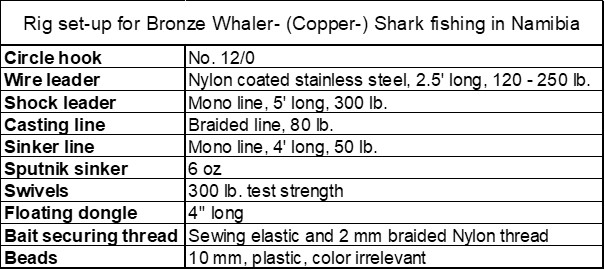
The attached sketch shows the rigging process for fishing Bronze Whaler sharks, and specifications are included in the accompanying table.
The rig is essentially a wire trace rig, consisting of a braided casting line that connects via a heavy-duty swivel to a mono shock leader. A side arm with a Sputnik sinker can slide freely up and down on this mono line. The lower end of the shock leader is connected with a Double-Uni knot to a nylon-coated wire leader, which holds the #12/0 circle hook.
The Sputnik sinker prevents the bait from moving too much on the sandy bottom. The stainless steel arms lock in place and anchor in the sand, ensuring the bait stays in place. When pulling the line, the arms of the sinker snap back, allowing for easy retrieval.
Bait used
It’s important to use big and bloody bait to catch Bronze Whaler sharks. Cut a 2” / 5cm wide steak from a long, slender fish with significant bloodlines on the sides and fatty meat. If the bait is frozen, it’s even better because thawing releases more olfactory teasers. Big mackerels are an excellent option for this reason.



Before connecting the bait to the hook, a floating device (Dingle-Dangle) should be inserted into the bait. This will slightly lift the bait from the seabed, making it more visible and more accessible for the sharks to bite into. Additionally, the floating device allows the smell of the bait to spread over a larger area. Dingle-dangles can be homemade or purchased from fishing tackle stores.
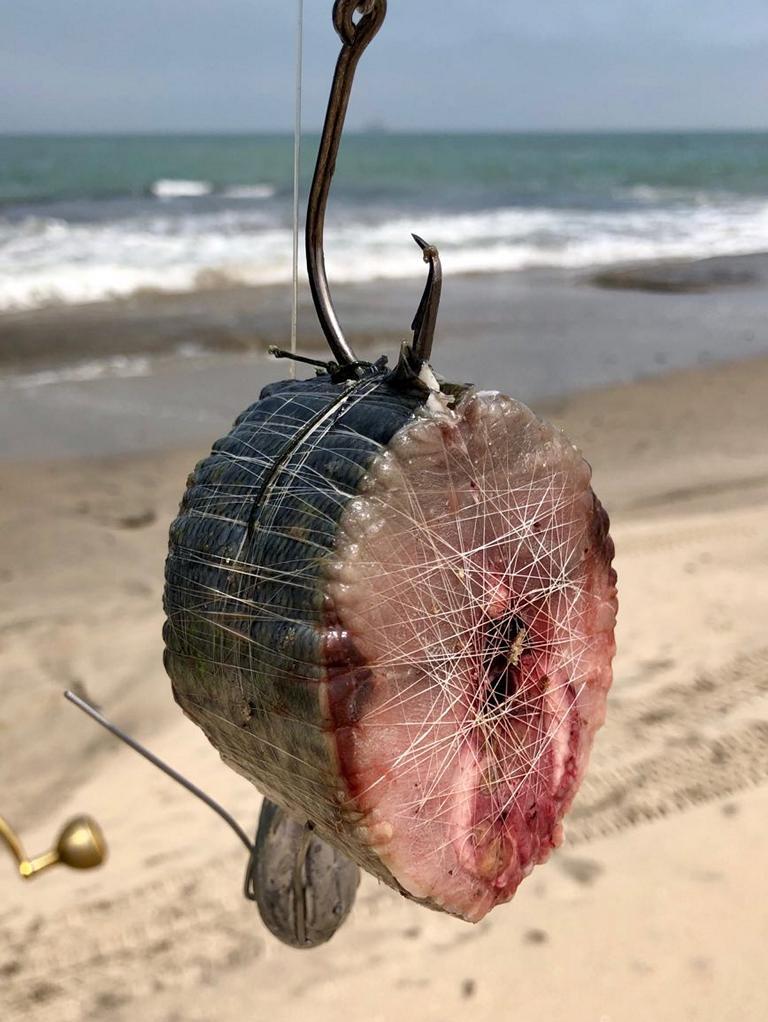

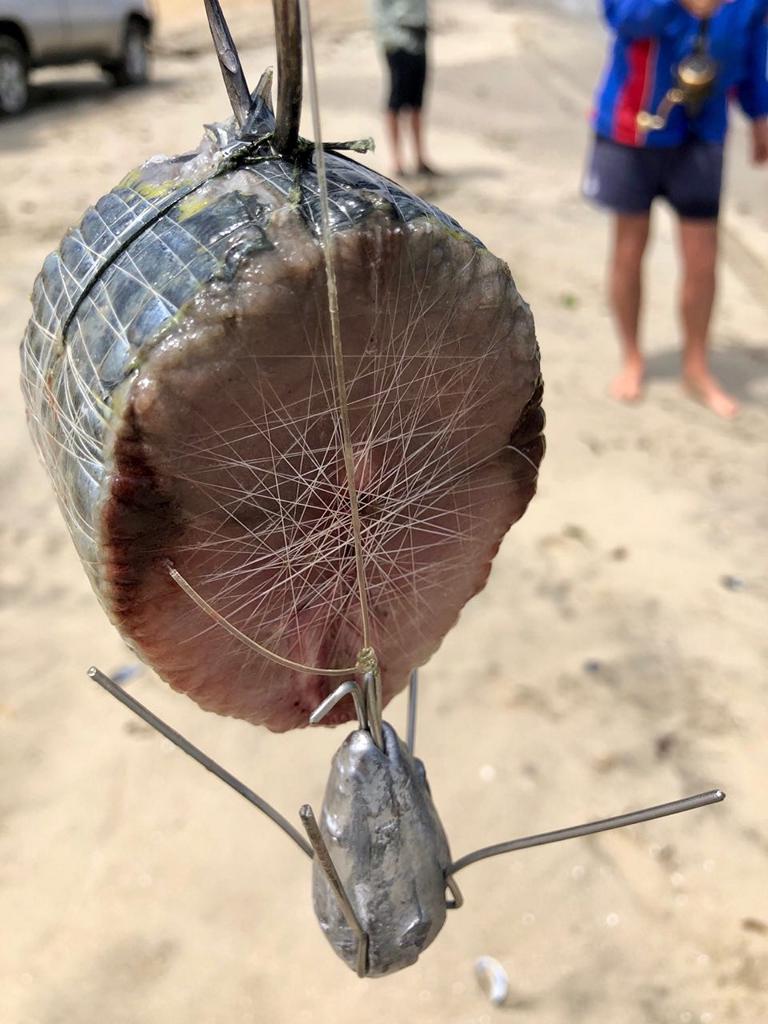
After the Dingle-Dangle is inserted into a large piece of bait, it is wrapped tightly with Latex bait thread. This will ensure that the bait stays in place and doesn’t disintegrate during casting. Finally, a braided nylon line should be used to tie the bait to the hook. By wrapping and stitching the bait in this way, a tight and compact hook-bait bundle is created, making it difficult for sharks to steal the bait without getting hooked.
Drilling and landing the shark
After delivering the bait to the correct location, the fisherman will wait patiently for a shark to take it. In my case, I waited for about 45 minutes while my colleagues managed to catch three different shark species, making me feel envious. However, our fishing guide, Shane Milne, assured me by saying, “Don’t worry, the Bronzies won’t leave any piece of bait untouched.” And he was right.
Hooking the shark
As the line was slowly pulled out to sea, it became clear that something significant had taken the bait. Our fishing guide, Shane, was worried that I might instinctively jerk the rod to try and hook the fish prematurely. However, his previous instructions had prepared me for this moment. I allowed the shark to take the bait and swim away with it. The shark kept the bait in its mouth, and the circle hook did its job perfectly. The line gradually moved towards one corner of the shark’s mouth, and the hook smoothly slid into the cartilaginous area, hooking the shark securely. Circle hooks have only a tiny barb, but their unique circular shape holds fast and prevents the hook from coming loose.
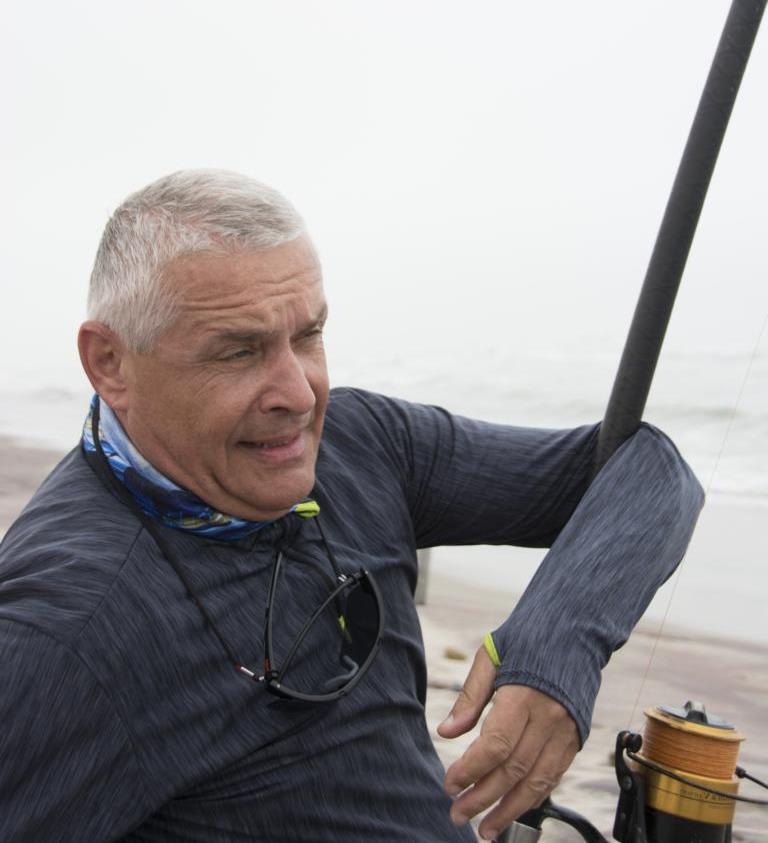


Drilling the shark
Then came the moment when it was time for “Man & Equipment vs. Beast.” The process involved constantly drilling and pulling back on the rod, with both actions needing to be separated. The reel was turned only when pressure was released and lowered. Afterward, hands were off the reel, and the rod was pulled back. This action exerted unbelievable pressure on all parts of the rig. This pressure was felt on the reel and rod and the lines, swivels, and knots. And at the end, on the cartilage of the fish’s mouth. Such a strenuous fight requires the best equipment and the knowledge and skillfulness of the fishing guide who prepares and provides the whole rig. Shane deserves all the praise for his expertise.
The battle with the shark lasted for one hour, during which I applied the highest possible pressure to the fish. However, the Bronzie seemed unfazed and repeatedly pulled off the line with immense force. Eventually, the shark started getting closer, and I was so exhausted that I couldn’t use my hands anymore. To shorten the distance between the fish and the coastline, I had to put the rod inside my elbow and walk back into the desert. My two colleagues and Shane did not offer any help. Instead, Shane just remarked, “You wanted it like that.”
I managed to utilize the wave actions to bring the fish closer with less strain and was finally able to beach it. The whole experience was physically and mentally exhausting, but it was all worth it.



Releasing the shark
The shark was measured in a straight line from the tip of the snout to the groove in front of the tail fin. Shane announced that this was a Bronzie weighing around 110 kg, which is considered a good size for this species.



Shane took out one tooth from the shark as a souvenir, and my wife and colleague took some obligatory photos. Then, with their help, I pulled the shark back into deeper water. I was too exhausted from the fight to do it alone. Together, we managed to get the 110 kg Bronze Whaler back into the sea. We moved him back and forth to aerate his gills, and he quickly swam away.
Other shark species caught



In addition to the Bronzie caught by the author, the two colleagues caught a Spotted Gully Shark, three Seven-gilled Cow Sharks, and a juvenile Smooth-hound Shark during the outing. All the fish caught were released back into the sea in good condition.
Bronze Whaler sharks for food
A few days after catching this Bronze Whaler shark, we spoke with a local farmer to inquire about the historical use of sharks as food. According to him, it was common practice in the past to consume all sharks caught along the coast. He had eaten parts of a 300 lb. Ragged-tooth shark that his father had caught. Surprisingly, he mentioned that the taste of the meat was comparable to beef, or at least that’s how he described it. However, he emphasized the importance of bleeding and killing the shark immediately upon landing. He cautioned against the common practice of leaving the shark to die under the trailer.
When a shark dies, ammonia is produced due to the breakdown of its body cells and the release of enzymes. These enzymes interact with the shark’s urea, which is present at high levels in both its tissues and the rectal gland near the cloaca.
After the shark was quickly killed, it was gutted immediately, and its head, tail, and fins were removed. Freshly caught shark flesh is typically tender and relatively soft. However, the flesh begins to firm up as time passes, resulting in a more rigid texture. Once the meat has “set,” the shark carcass is skinned, filleted, washed in saltwater, and then chilled or frozen.
If shark meat still retained an ammonia odor, it was recommended that thin slices of meat be soaked in milk or a diluted vinegar solution for some time to remove the smell.
All information regarding ‘Sharks for Food’ has been documented and written solely for informational purposes. It is strongly advised to release every shark caught in a healthy state and observe all governmental fishing regulations.
Lessons learned from catching a Bronze Whaler Shark:
- One must possess the appropriate knowledge, skills, and equipment to catch a Bronze Whaler shark.
- Besides experienced local- and tournament fishermen, all other fishermen should contract a fishing guide professional for success.
- ‘Bronzies’ are beautiful, sleek-shaped sharks that demand the angler’s maximum physical fitness.
- Only circle hooks are recommended to prevent severe injuries in the shark’s mouth corners.
- This type of fishing is sustainable for the fish stock and constitutes a quality tourism highlight in Namibia.
Acknowledgment
I am grateful to Shane Milne from Aquanaut Tours in Swakopmund for providing me with this unforgettable experience and especially for his professional and reasonably priced services. His website can be opened via this link. I want to mention that I have not and shall not receive any benefits for this referral. However, I firmly believe that Shane is one of the finest fishing guides in the Swakopmund area.
.






2 comments
Alessandra Bocelli
Good afternoon,
Next august we’ll be in Namibia and we’d like to join a bronze whaler shark fishing trip.
Can you help us to find someone who organise a trip?
Thank you in advance,
Alessandra
Kurt Hoelzl
Hi Alessandra,
Best fishing guide in Swakopmund is – in my personal opinion – Shane Milne. You can contact him at info@aquanauttours.com Further information can be found on his website: https://aquanauttours.com/about-us/
…or his YouTube channel: https://www.youtube.com/channel/UCFPBr6BmaDK1zlrCapAVvMQ/videos
Best,
Kurt